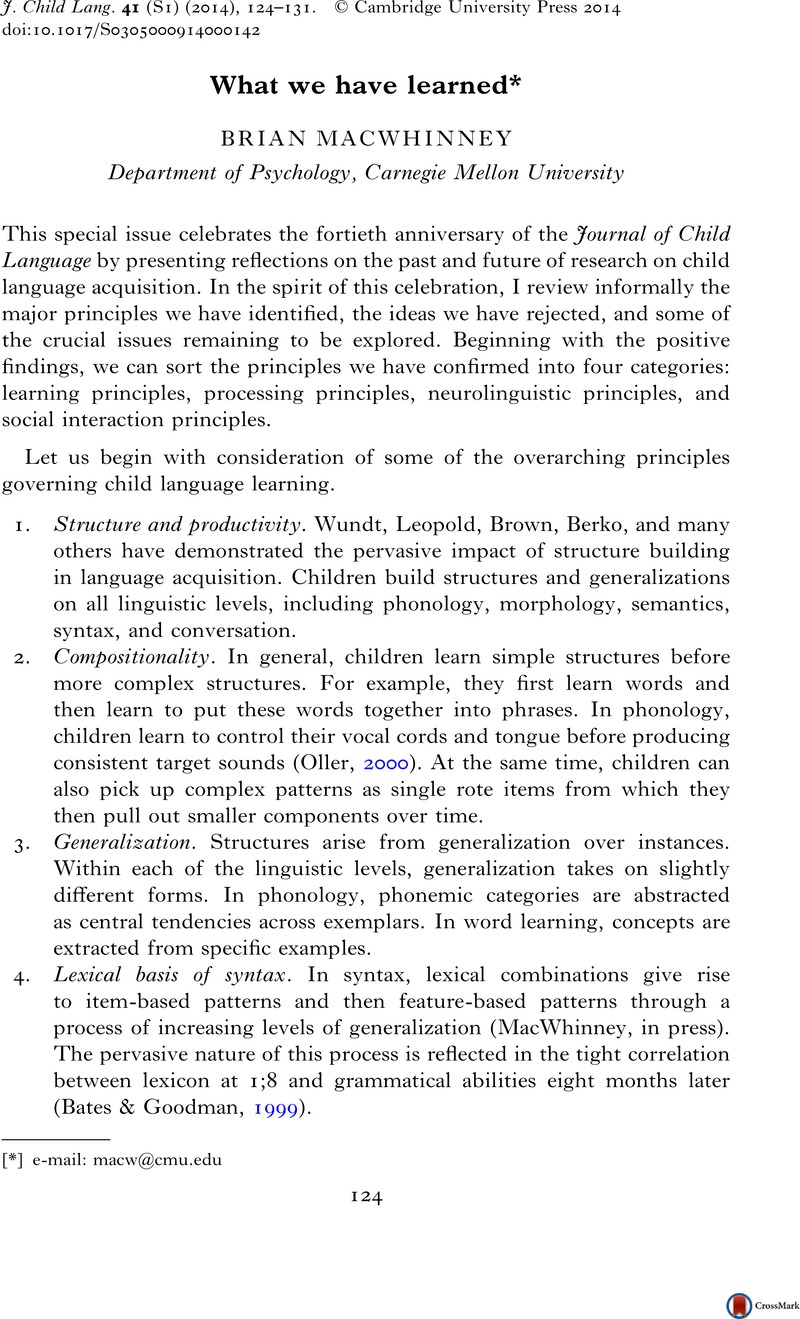Crossref Citations
This article has been cited by the following publications. This list is generated based on data provided by Crossref.
Cohen, Annabel J.
2015.
The AIRS Test Battery of Singing Skills: Rationale, item types, and lifespan scope.
Musicae Scientiae,
Vol. 19,
Issue. 3,
p.
238.
2016.
References.
Language Learning,
Vol. 66,
Issue. S1,
p.
313.
Ellis, Nick C.
2017.
Cognition, Corpora, and Computing: Triangulating Research in Usage‐Based Language Learning.
Language Learning,
Vol. 67,
Issue. S1,
p.
40.
Pulvermüller, Friedemann
2018.
Neural reuse of action perception circuits for language, concepts and communication.
Progress in Neurobiology,
Vol. 160,
Issue. ,
p.
1.
Zhang, Yanhui
and
MacWhinney, Brian
2023.
The role of novelty stimuli in second language acquisition: evidence from the optimized training by the Pinyin Tutor at TalkBank.
Smart Learning Environments,
Vol. 10,
Issue. 1,



